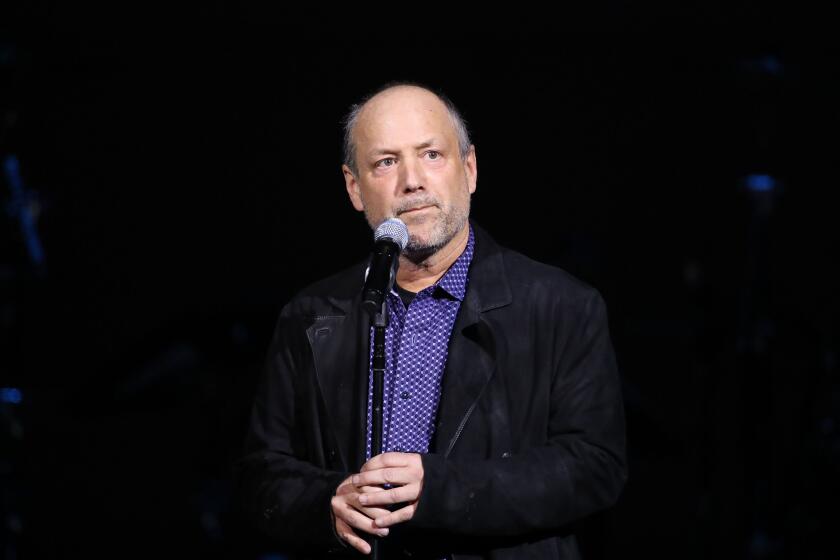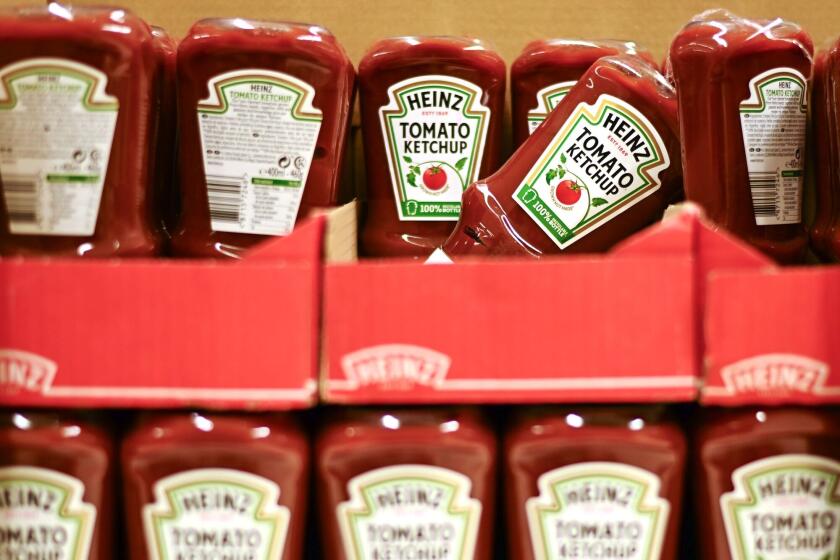In South Africa, an artist in the vineyard
- Share via
MALMESBURY, SOUTH AFRICA — Eben Sadie jumps barefoot into a vat of grapes like a boy on a beach leaping into the surf.
He tramps until the liquid runs purple up to his shins. Jumps out to fix a recalcitrant motor. Scoops fermenting grapes, bucket by bucket, into a basket press. Unloads a truckload of grenache and verdelho grapes with three of his employees, and wheels the load into a cool room. Scurries back to the basket press to extract the juice. Buckets the straw-colored liquid into a steel vat. Siphons off a glass and tastes it thoughtfully, a slow smile spreading across his face.
And that’s all before 10 a.m.
Through it all, Sadie, shaggy-haired and apologetically unshaven, a former surfer who got into winemaking almost by accident, is glued to his cellphone, sending trucks here and pickers there. Or he’s talking about the poetry of making wine.
It’s less a matter of finding the perfect recipe of yeast, oak and tannin than coaxing his grapes to surrender their hidden gifts, like a man trying to tame a shy stray cat.
South African wines, once little known in the U.S. because of the stigma of apartheid, are taking off as connoisseurs trim their purses in search of quality for price: The South African rand’s downward spiral has put many decent South African wines in the $10-to-$15 range. Wine columnists are bubbling like flutes of methode champagnoise. Regions like Stellenbosch and Swartland are rolling off retailers’ tongues.
It didn’t hurt that President Obama reportedly celebrated his November election victory with Graham Beck Non Vintage South African bubbly. (The same label that former South African President Nelson Mandela toasted with at his inauguration in 1994.)
Or that when Wine Spectator magazine recently rated 400 South African wines, a quarter of them were handed marks of at least 90 out of 100. Sadie’s high-end Columella is the only South African wine ever to crack Wine Spectator’s 95 rating.
But Sadie, 37, shrugs about the fuss as he touches a sandaled foot to the accelerator of his truck. He edges it along a dusty track between the vines on Paardeberg, or Horse Mountain, in Swartland, Western Cape province.
He’s a dreamer. If a taster samples his wine and spits, Sadie flinches, offended to see three years’ work discarded. He talks about his vines like a shepherd worried about his flock of fluffy animals. And his decision to make expensive wines when other South Africans are pushing a lower price point conjures, briefly, the image of a lamb being led to slaughter.
He strides through the vines, compulsively popping grapes in his mouth, looking for the perfect moment to harvest. He nods toward a parcel of grapes on the horizon that he senses are ready. “They’re calling me,” he says.
Sadie is not at all interested in South Africa’s growing reputation as a producer of cheap-but-solid recession tipple.
He sees himself as a poet who has to “write in liquid.”
“A bottle of wine should take you on a journey, a journey into what it is. What drives me is this quest to make perfect wine,” he says, rolling his Rs in his lilting Afrikaner accent. “I’ll never make it. But every day I’ll get up at 5 o’clock in the morning and have hands that look like this all year round,” he says, taking a rough farmer’s paw off the steering wheel. “I’m not interested in money. I’m running around this beautiful arid mountain landscape trying to find the answers.”
His Columella wine is a reflection of Horse Mountain’s dry stony soils, its baking heat and the Mourvedre and Syrah grapes grown in numerous small vineyards. But more, it’s a reflection of Sadie’s obsessive perfectionism.
On the surface he seems easygoing, even flip. But he spends hours stacking his barrels in perfect rows, using a string and level.
And the fruit for Columella is hand-sorted, grape by grape. The grapes are stored in open wooden vats, trampled twice daily for a month, then moved with buckets to a traditional basket press. The wine isn’t pumped into barrels, but moved by gravity. Pests in the vineyards are controlled with a seaweed spray that must be frequently applied.
The production costs are high. So the wine doesn’t fit that cheap-but-nice South African profile. It costs around $90 a bottle. He makes one in a more affordable range, Sequillo.
The 95 rating was “nice, but it didn’t make the American consumer buy this wine, because there’s this view that a wine from South Africa can’t possibly be that expensive. It must be French.”
It won’t make him rich -- especially in this economic climate -- but Sadie can’t suppress the artistic urge, even if it means that he lives in a modest $300-a-month rental house he shares with his wife and two children, decorated mainly with wine bottles from every corner of the globe.
“Look at those mountains,” he exclaims, stepping out of his house before dawn. He sits quietly drinking in the view. Then he plunges into his work, and his love.
For Sadie, the son of a railways bureaucrat who drank wine only on weekends, an early passion was finding the perfect wave, and his ambition was marine biology. Drafted into the army in the apartheid era, he idly picked up a wine magazine from the next bunk. He was riveted. The seed was planted.
He studied agriculture and learned about winemaking. He started making wines in 1992 and learned how to oak a wine, loading it artfully with vanilla, toffee and coffee flavors. But something was missing.
Sadie made an eight-year journey of discovery through Europe, to find the missing links, history and tradition. He read the writings of the Spanish-born Roman-era agronomist Columella and learned about Roman viticulture.
He believes the isolationism of the apartheid era held back South African wines for years. Sadie attacks each day as if making up for his country’s lost time. Despite his relative youth, he has more than 30 harvests to his name, two a year since 1992: one in his South African winery, the other in his Spanish winery.
It’s been a long grind for recognition for South African winemakers. Andre Shearer, founder of Cape Classics, the only U.S. importer dealing exclusively in South African wines, says he was met with cold stares when he started trying to promote them in New York in 1992, as the apartheid era was drawing to a close.
Until recently, company Vice President Molly Choi says, selling the South African brand was a battle.
“I joined the company in ‘97, and there were people who either weren’t aware of where South Africa was or would say, ‘I don’t do South Africa.’ You would just get these random rejections,” she said.
Her favorite marketing trick is to blind-taste fine South African wines against top Californian or French labels.
But so far, the U.S. appetite is for low-end South African wines. Could it be that Sadie’s search for greatness has come at exactly the wrong time, amid an ugly recession that murders hopes and dreams?
“As a general rule, I’d say it’s a tough time to be selling anything over $30,” Choi said. “It doesn’t matter where it’s from.”
But Sadie won’t sacrifice art for commerce.
“I am making wine for myself. And I want to produce something of consequence,” he says.
His new project, not yet named, is almost the antithesis of commercialism. He and a friend identified numerous old vineyards, some over a century old, and he’s making heritage wines in tiny quantities.
Two of the vineyards produce just one barrel of wine each, about 280 bottles. They are sold only on mailing lists to avid collectors.
“If you follow your dreams, you live like a king,” he says, happily. “And you know the best of it? I’m just warming up.”
--
More to Read
Eat your way across L.A.
Get our weekly Tasting Notes newsletter for reviews, news and more.
You may occasionally receive promotional content from the Los Angeles Times.









